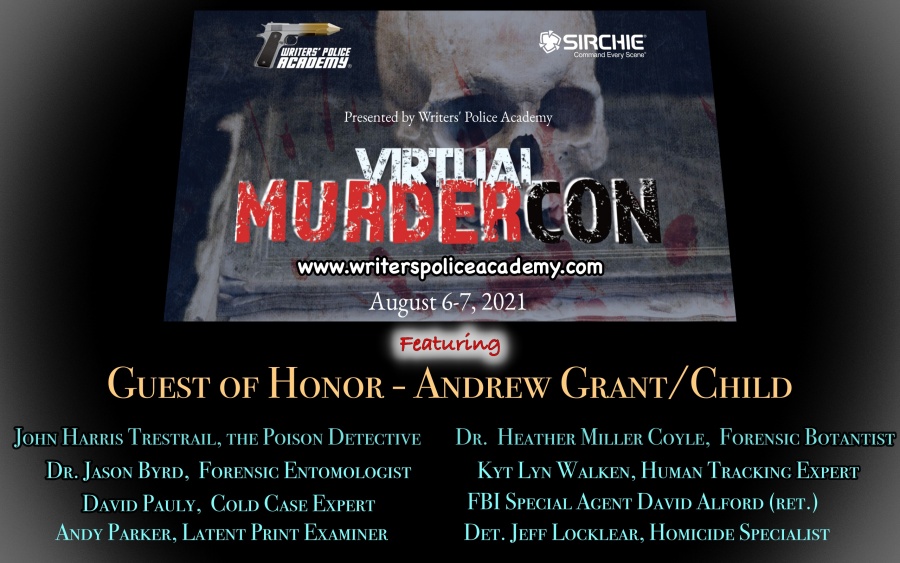Police officers are not trained to shoot to kill, nor do they shoot to wound. Again, officers are not taught to kill. I know, the recent death of George Floyd was extremely disturbing, but the actions of the officers involved are NOT the result of police training. I’m fairly confident that their actions, for whatever reasons, were not taught in any U.S. police academy. Nor were they necessary, proper, or even humane. But more on this in tomorrow’s article.
For now, let’s dive into another topic that, too, is often confusing to some people. And I understand how and why the subject matter is a bit perplexing so I’ll try my best to clarify. The topic … do police officers shoot to kill, or do they shoot to wound?
While we’re at it, we’ll also address the questions and statements we all see time and time again, most typically during the aftermath of police-involved shootings.
“Why didn’t he shoot the gun from the bad guy’s hand?”
“Shoot the bastard in the shoulder. Cain’t shoot anybody when his shoulder’s all shot up.”
Or, “Shoot ’em in the leg. That’ll stop ’em.”
Police officers are trained to stop a threat to human life
U.S. police officers are not soldiers and criminals are not enemy combatants. Contrary to the beliefs of some, U.S. streets are not battlefields where cops shoot first and ask questions later. It cannot and does not work that way. Yes, the current rioting and mob violence (not the peaceful protests), unfortunately requires a heavier than usual approach, but this is not the norm. Still, police are not taught to kill anyone.
In a perfect world there would be no crime and we’d all be safe, all the time. But our world is FAR from perfect; therefore, cops are tasked with arresting those who break the law. They don’t make the laws, just enforce them.
Unfortunately, some bad guys choose to not be arrested and will do whatever it takes to remain free, including trying to kill police officers. They may also choose to seriously harm or kill others during the commission of their crime(s). These two scenarios are the cause of officers having to use deadly force to stop the threat to the lives of others, and to themselves.
Back to the earlier statements—police officers are not taught to kill anyone, nor are they taught to “wound” anyone. Officers do not aim for hands, feet, knees, firearms, knives, etc. Instead, during a deadly force confrontation—when lives are at stake—officers are taught to shoot center mass, meaning the center of their intended target. If all they see is the suspect’s head, then that is their target. If they see the entire body they then aim for its center (center mass).
Center Mass
Why aim for center mass? Common sense answer – because it is the largest available target, which makes it the easiest area to hit when under extreme duress during an incident that sometimes happens within a fraction of a second.
The reason behind not shooting to wound is pretty simple, actually, and here’s why. Most police officers are not skilled award-winning sharpshooters. Not even close. To expect them, or anyone, to hit a fast-moving target, such as an arm or leg, while under duress, is unrealistic. Hands and arms can move across the body as quickly as 12/100th of a second. From hip to shoulder in 18/100th of a second. The time it takes a police officer to pull the trigger on one of the faster reacting trigger pulls, that of the Glock, is a slow 1/4 of a second. And that’s if the officer has already drawn his/her sidearm and has it pointed at the suspect.
It’s nothing short of impossible for an officer to see the threat, react appropriately, unsnap the holster, perform the required series of motions to free her weapon from the security holster (I’ll bet many of you didn’t know there was a combination/series of actions required to remove an officer’s pistol from a security-type holster), think about what she’s doing, decide whether or not the threat is real and, if so, pull the trigger. Oh yeah, she’d also have to take time to aim for the smaller targets—arms, hands, or legs. Impossible. No way. No how. Can’t and won’t happen, not even on her/his best day.
Another point to remember regarding how quickly shooting situations unfold. In many, many instances, there is not a single portion of a second to spare, including enough time to shout, “Drop your weapon!” Or even to yell, “Stop!”
Here’s a video of an actual shooting scenario that occurred during a traffic stop. Watch how quickly the shooting unfolds.
Then there’s this. Suppose an officer is engaged in an intense shootout, and they are intense, believe me (been there, done that), and while returning fire as bullets zing and zip past, they somehow miraculously hit the suspect’s arm, or hand, or foot? Some people believe that once a person is shot they automatically drop to the ground and surrender. This is NOT always the case.
I’ve seen bad guys continue shooting after being struck by several rounds. Actually, I was in a shooting situation where the bad guy continued to shoot after having been shot in the head once and in the center of his chest four times. Even then he hopped up and ran several yards. I was there. I saw it with my own eyes. In fact, I was the detective who’d shot him. I was also the detective who ran him down and tackled him. So being wounded, even severely wounded, does not necessarily stop a threat to human life.
Besides, a shot to the arm leaves the suspect’s free hand to continue his attempt to kill the officer or other potential targets, such as a wife, husband, a bank teller, a child, and, well, you get the idea. A shot in the leg leaves both hands free to continue firing at officers. Wounding someone, hoping that’ll stop them from killing is stuff you see on TV. It’s just not that way in real life situations.
In addition, a bullet wound to the leg can be just as deadly as one to the chest. A shot that severs a femoral artery could cause the person to bleed death within a matter of a couple of minutes, or less.
Stop the threat. That’s the intended outcome of the use of deadly force.
Now, back to shooting to kill. I’m not aware of any police agency in the U.S. that teaches/trains officers to kill. Not one. Besides, how many sane people would sign on with an agency if they were told they must kill people as part of their daily duties—write speeding ticket, respond to kids playing in traffic, kill the guy standing in front of the Piggly Wiggly, go on lunch break.
During a shooting situation, officers typically do not have time to aim. Instead, they revert to their training—draw, point, and shoot for the center of the target.
Shootings involving police officers most often happen in a matter of seconds or less, and usually at very short distances—a mere few feet. In fact, these close-range situations occur so often that officers train quite a bit at shooting from short distances, without taking aim. They’re taught to draw and point their weapon at the center of the target, or as close as they can get to the center.
Again, even at greater distances, there’s still no time to stop, take a proper stance, draw a weapon, take careful aim, ask the offender to stand still so the officer won’t miss and hit an innocent bystander, and then fire. So officers shoot for center mass, the largest portion of the body they see. That’s it. Nothing more, and nothing less.
Keep this in mind. Rounds that strike center mass could certainly cause the death of the suspect, but death is not the intended outcome. The goal is to stop the threat and to do so the greatest chance of hitting the target is to aim for the largest portion (center of the torso). If a bad guy surrenders the moment he sees that the officer has drawn their weapon and fully intends to use it, the threat is then over and the officer must switch fro ma deadly force situation to one taking the suspect into custody. That’s always the goal, to make the arrest, not to take a life.
Supercalifragilisticexpialidocious
There it is, the word sung by Julie Andrews and Dick Van Dyke in the movie “Mary Poppins.” Now, say it out loud. Or, if you prefer, say it in reverse – dociousaliexpilisticfragicalirupes. Either way, it takes us somewhere between one and two seconds for it to roll off our tongues, give or take a tenth of a second or two. That’s pretty quick, yes?
I suppose I could stop here and let you go about the remainder of your day with this ear worm digging its way into your brain:
It’s supercalifragilisticexpialidocious
Even though the sound of it is something quite atrocious
If you say it loud enough, you’ll always sound precocious
Supercalifragilisticexpialidocious
Um diddle, diddle diddle, um diddle ay
Um diddle, diddle diddle, um diddle ay
Um diddle, diddle diddle, um diddle ay
Um diddle, diddle diddle, um diddle ay…
But let’s stick with the time it takes to say that word. For me it’s somewhere between 1.01 seconds and 1.22 seconds, depending upon how quickly I start after clicking the button on the stopwatch.
Now, imagine that you’re a police officer who’s responded to a call where a suspect used a baseball bat to beat his spouse and children. You arrive at the scene and hear yelling, screams, and children crying from inside the home. You knock. No answer. Still more screaming. You force open the door and rush inside where you’re immediately faced with a man pointing a handgun at a badly battered woman. He begins to turn toward you. How do you respond to the threat, and how long does it take to do so?
Well, your body and brain must first of all figure out what’s going on (perception). Then the brain instructs the body to stand by while it analyzes the scenario (okay, he has a gun and I think I’m about to be shot). Next, while the body is still on hold, the brain begins to formulate a plan (I’ve got to do something, and I’d better do it asap). Finally, the brain pokes the body and tells it to go for what it was trained to do—draw pistol, point the business end of it at the threat, insert finger into trigger guard, squeeze trigger.
To give you an idea as to how long it takes a trained police officer to accomplish those steps, let’s revisit Mary Poppins and Bert the chimney sweep, and that wacky word supercalifragilisticexpialidocious. Remember, it takes us a little over one second to say the entire word. Try it. You’ll see.
To put this scenario into perspective, a police officer’s quickest reaction time (based on a study of 46 trained officers), when they already know the threat is there, AND, with their finger already on the trigger, is 0.365 seconds. That’s far less than half the very brief time it takes Bert to sing that famous word, and certainly not enough time to stop, draw a weapon from its holster, take aim, yell a bunch of commands, check for passersby, look for accomplices, and, well, you get the idea.
So, when confronted with a potential deadly force situation, officers must perceive/identify the threat, evaluate the situation, develop a plan of action, and then set that plan in motion, and they must do so in the time it takes to say “supercali.” Not even the entire word—about the time it takes to blink.
Go ahead, try it. Blink one time and then think about all the cool things you could accomplish during the time it took to quickly close and open your eyes.
Blink.
During a traffic stop in Arkansas, a passenger in a vehicle shot at officers, killing one. The man fired the first round at the face of one officer. That shot occurred in less than supercali. Actually, it was more like, su-BANG!
The suspect then continued to fire at the other officers on scene, shooting several rounds during our imaginary supercalifragilisticexpialidocious timeframe. The officers were not able to return fire.
How about you? Are you able to make extremely complex decisions in less than a second? How about decisions that involve life or death?
Blink. A suspect just fired a round at you.
I dare say that many of us can’t decide what to select from a fast food menu within that scant time frame.
Blink. Round number two. Have you managed to draw your pistol yet?
Sure, it’s super easy to look back at deadly force incidents and offer opinions as to how they should, or should not have been handled. But only the people who were there at the precise moment the trigger was pulled know the real story. They alone know how they perceived and reacted to the threat to them and/or others.
Again, officers often have less than a second to react, and a lifetime to deal with the decision, if the officer survives the encounter.
SU …
Tomorrow, more about the arrest of former police officer Darek Chauvin. We’ll also discuss the cause(s) of George Floyd’s death, and that a second video confirmed my early predictions.
By the way, our internet is finally back in service. For a solid week, Verizon worked on the lines in front of neighbor’s home. He’d called to report his service was out and they eventually arrived a couple of days later. Once they’d repaired whatever was wrong with the neighbor’s line they packed up and left. Within an hour of the line of five trucks leaving, our internet shut down.
After several calls and online chat sessions with support, rebooting, testing lines and devices, they finally answered my pleas to have someone come out … three days later.
Of course, I’d already told them about the earlier work in the neighborhood, but they dismissed my theory that the crew did something to cause our outage. Instead, they insisted that something was wrong inside our house, and they went through a checklist – kids playing, and breaking the equipment, dogs or cats or mice or hamsters or lions or tigers or bears possibly chewing through a line? Is your power on? Did you unplug the router and forget to plug it back into the receptacle? Etc. I explained to the man that we have no kids living with us. We have no pets. There had been no power outages. Mice understand that to enter our home is to die. So they remain outdoors along with the lions, tigers, and bears.
So a tech showed up Sunday morning at 9 a.m. He checked the equipment mounted to the outside of our house and says to me, “There’s no service coming to your device.” The thought that went through my mind was … Well, duh.
So off he goes out to the street where, from inside his truck, he begins to glance up to the tops of telephone poles, one after the next. He did this for nearly an hour. Then he returns to the pole in front of my neighbor’s house, the place where the crew had perched for a week while working on the lines. The pole that I’d said over and over was most likely where they’d find the trouble. It was self-inflicted, I’d said. Thy caused a problem where no problem existed..
The tech called me to say a part was missing from one of the boxes at the top of that pole. Of course, he didn’t have the part with him, which meant that a different crew member/technician would need to come out to replace the missing do-dad. But he couldn’t do the work that day. Instead, he would come the next afternoon.
Anyway, on the forth day there was internet, and the world was once again whole.
Oh, and a new water heater was installed an hour or so prior to the return of Verizon service. Yep, the old one conked out the morning of the day the Verizon service shut down. It was that kind of weekend.
As always … Please, no politics, religion, gun rights or wrongs, or other hot button topics/comments. This blog is strictly for delivering fact. If, on the rare occasion I decide to offer an opinion I make sure that it’s clearly stated that I’ve done a dumb thing by swerving to the outside edge of where fact meets opinion.
This article is not one of those times. Nor is it any attempt to poke a stick into Joe Biden’s eye for his recent comment about training officers to shoot bad guys in the leg instead of center mass. However, the former vice president’s comment was indeed the prompt for today’s information. I wanted to let you know some of the the reasons why officers are not trained to shoot arms and legs. The simple answer is that doing so could be a death sentence for the officer.
Anyone who’s attended the Writers’ Police Academy’s firearms simulation training knows how quickly deadly situations erupt, and that many times there’s barely time to think or blink before the bad guy fires off a round in your direction. There is no time to take aim, particularly at a moving leg or arm.
Finally, speaking of the Writers’ Police Academy, there’s still time to sign up for a spot at MurderCon!












 Guest of Honor Charlaine Harris is a true daughter of the South. She was born in Mississippi and has lived in Tennessee, South Carolina, Arkansas, and Texas. After years of dabbling with poetry, plays, and essays, her career as a novelist began when her husband invited her to write full time. Her first book,
Guest of Honor Charlaine Harris is a true daughter of the South. She was born in Mississippi and has lived in Tennessee, South Carolina, Arkansas, and Texas. After years of dabbling with poetry, plays, and essays, her career as a novelist began when her husband invited her to write full time. Her first book, Susan Hatters Friedman, MD
Susan Hatters Friedman, MD Kathy Bennett worked for the LAPD for twenty-nine years. Eight years were spent as a civilian employee, and she served twenty-one years as a police officer. While most of her career was spent in a patrol car, Kathy also worked at the police academy as a firearms instructor, promoted to the position of a field training officer, then worked in the “War Room” as a crime analyst. She promoted again, this time to the position of Senior Lead Officer—where she was in charge of a basic car area within a geographic division. She’s done a few stints undercover and was honored to be named Officer of the Year in 1997.
Kathy Bennett worked for the LAPD for twenty-nine years. Eight years were spent as a civilian employee, and she served twenty-one years as a police officer. While most of her career was spent in a patrol car, Kathy also worked at the police academy as a firearms instructor, promoted to the position of a field training officer, then worked in the “War Room” as a crime analyst. She promoted again, this time to the position of Senior Lead Officer—where she was in charge of a basic car area within a geographic division. She’s done a few stints undercover and was honored to be named Officer of the Year in 1997. Bruce Robert Coffin is the award-winning author of the bestselling Detective Byron mystery series. A former detective sergeant with more than twenty-seven years in law enforcement, he supervised all homicide and violent crime investigations for Maine’s largest city. Following the terror attacks of September 11, 2001, Bruce spent four years investigating counter-terrorism cases for the FBI, earning the Director’s Award, the highest award a non-agent can receive.
Bruce Robert Coffin is the award-winning author of the bestselling Detective Byron mystery series. A former detective sergeant with more than twenty-seven years in law enforcement, he supervised all homicide and violent crime investigations for Maine’s largest city. Following the terror attacks of September 11, 2001, Bruce spent four years investigating counter-terrorism cases for the FBI, earning the Director’s Award, the highest award a non-agent can receive.
























 remnants of the morning’s scrambled eggs sits on a rear burner. No, that’s not freshly-ground pepper dotting the top of the eggs. Listen closely and you can hear faint squeals coming from inside the metal walls of the grunge-crusted range. You don’t want to, but you do it anyway. You lean down. Yes, there are baby mice living inside the stove, and they’re crying for their mother.
remnants of the morning’s scrambled eggs sits on a rear burner. No, that’s not freshly-ground pepper dotting the top of the eggs. Listen closely and you can hear faint squeals coming from inside the metal walls of the grunge-crusted range. You don’t want to, but you do it anyway. You lean down. Yes, there are baby mice living inside the stove, and they’re crying for their mother. “Where’s your mommy?”
“Where’s your mommy?”


 An Ohio sheriff’s deputy left the courtroom for a bathroom break. A few moments later the man in his custody, who wore a stun belt, was hit with a series of electric shocks because the officer accidentally dropped the remote control for the stun belt into the toilet. When drying the controller, the action activated the belt which repeatedly zapped the subject with electrical charges. The judge declared a mistrial. The “shocked” prisoner was cleared medically and suffered no permanent harm.
An Ohio sheriff’s deputy left the courtroom for a bathroom break. A few moments later the man in his custody, who wore a stun belt, was hit with a series of electric shocks because the officer accidentally dropped the remote control for the stun belt into the toilet. When drying the controller, the action activated the belt which repeatedly zapped the subject with electrical charges. The judge declared a mistrial. The “shocked” prisoner was cleared medically and suffered no permanent harm.










